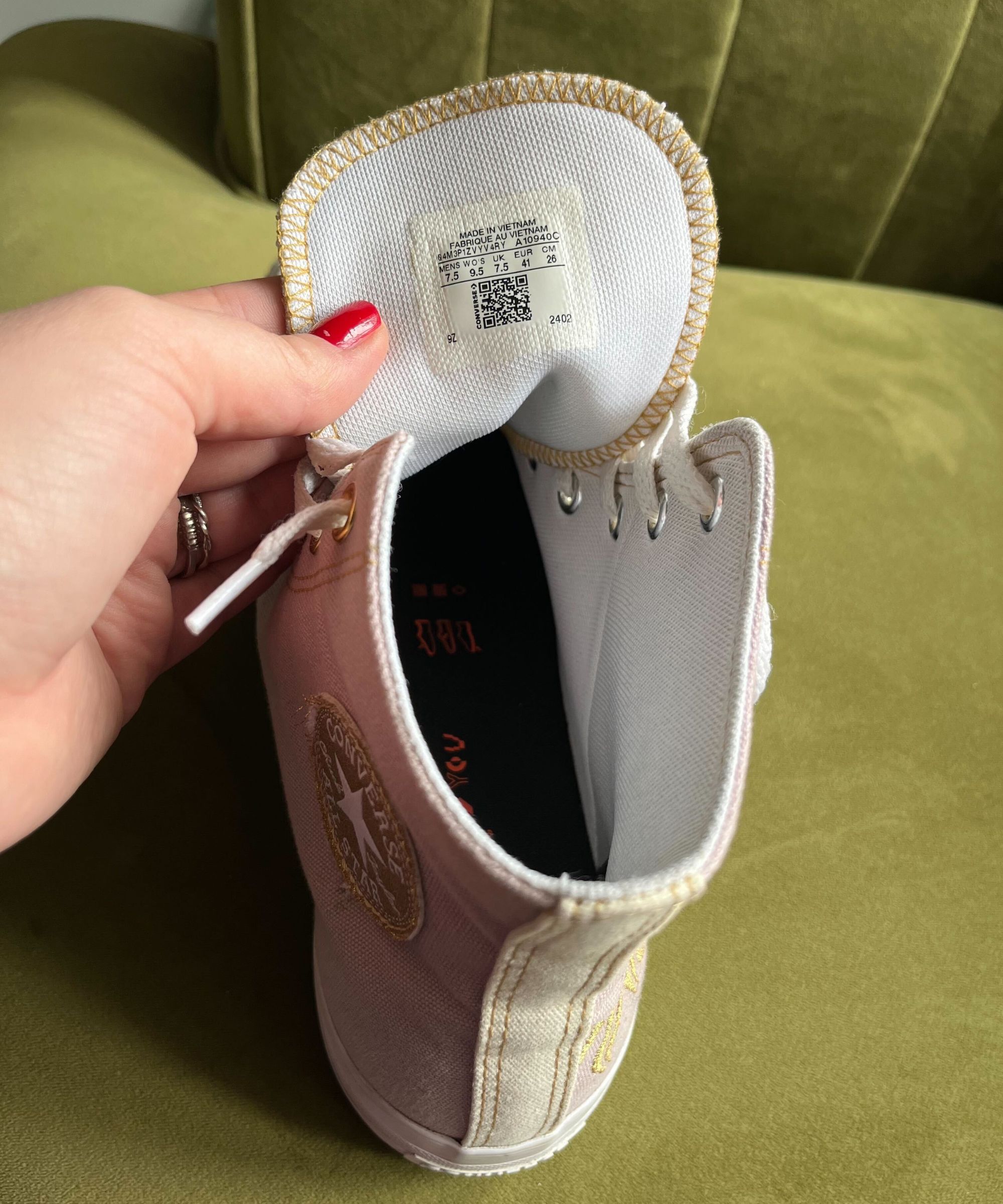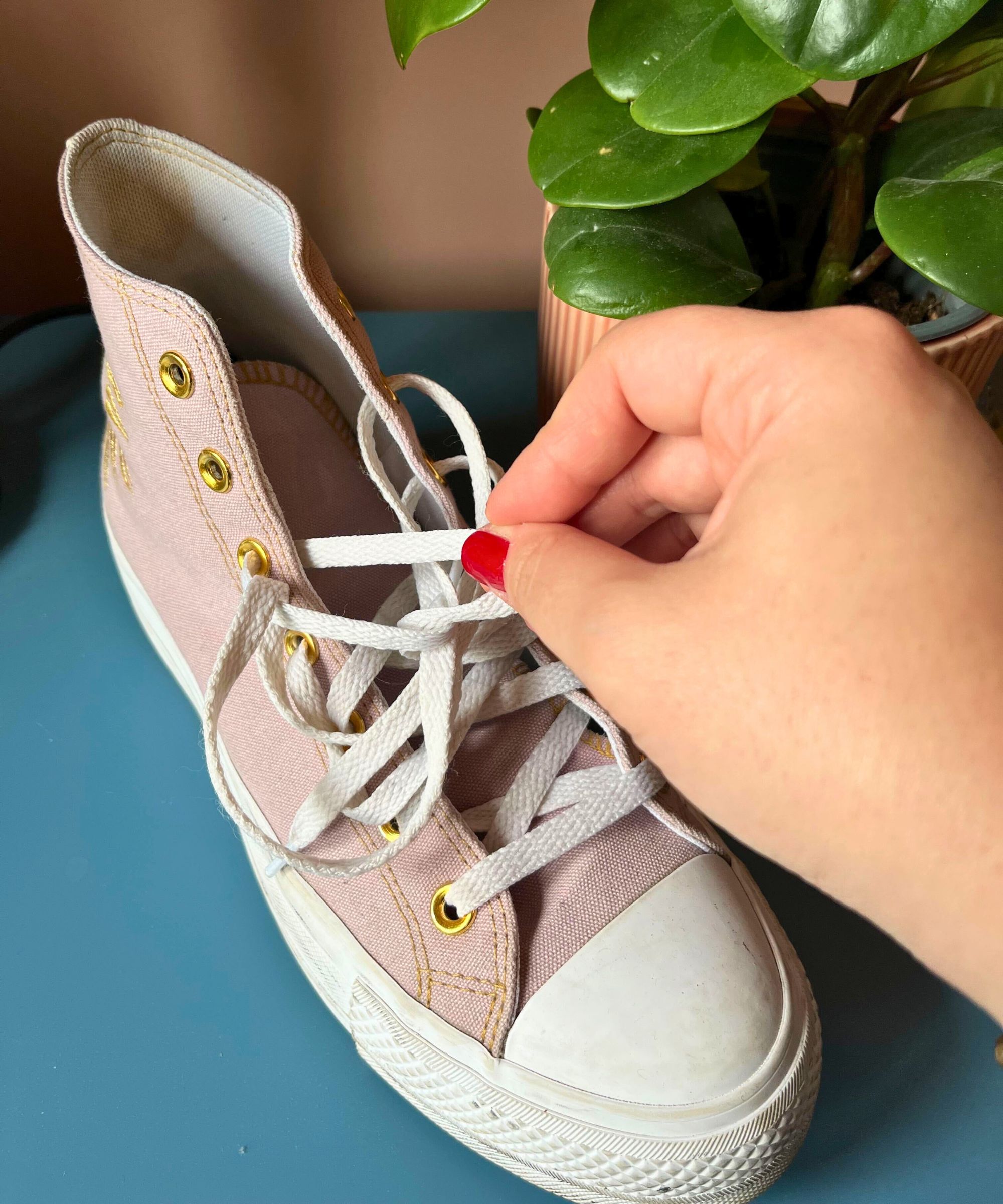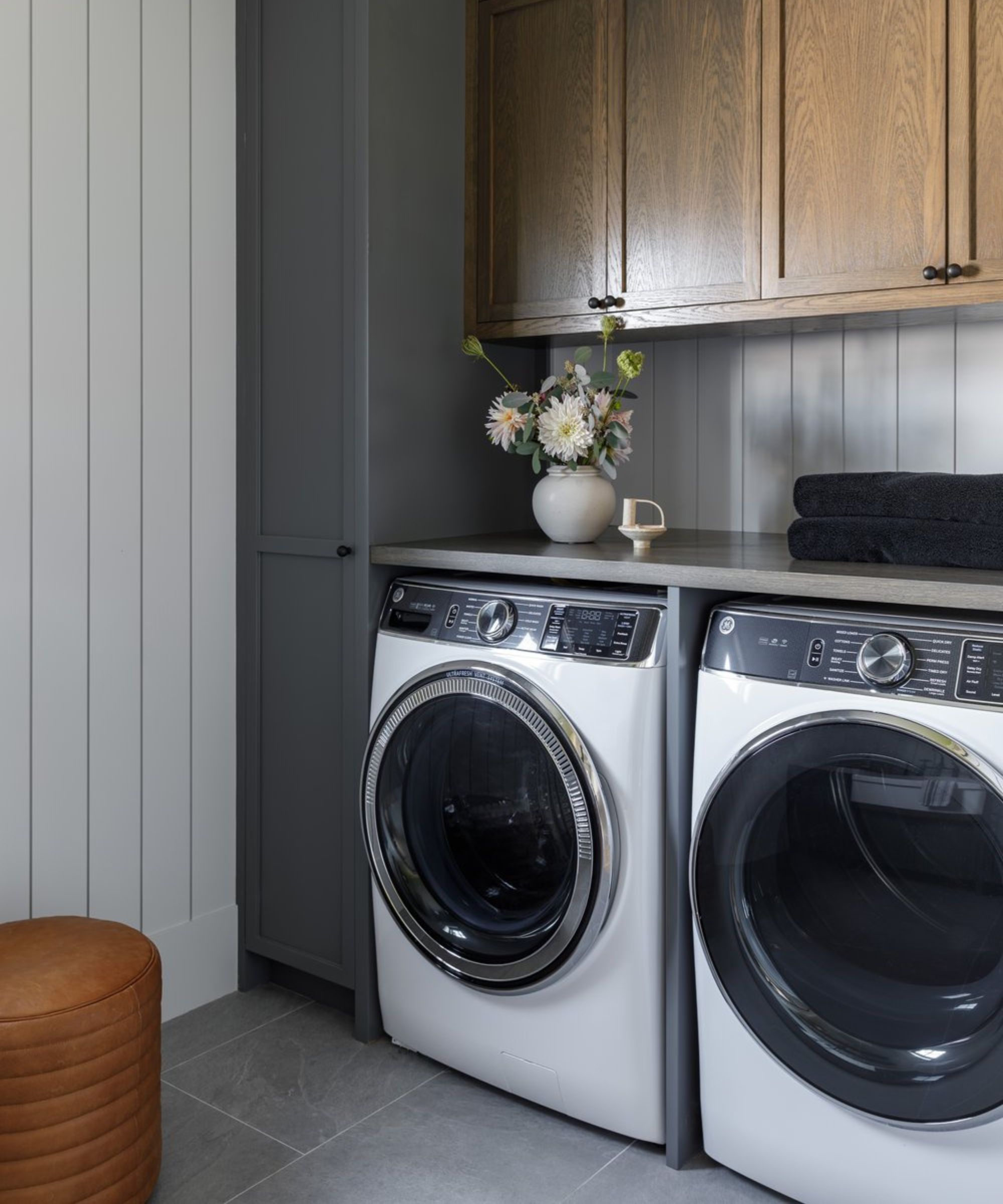How to dry shoes in a dryer without ruining them forever – this will stop them shriveling, melting or warping
Preserve the condition of your shoes while truly freshening them up


Learning how to dry shoes in a dryer is a great hack for freshening up tired, but favored pairs. However tossing them in the dryer without a second thought could lead to damage such as warped soles, as well as loosened stitching and glue.
Fortunately, there is a right way to dry shoes in a dryer without ruining them forever. Whether you're drying canvas sneakers, running shoes, or other styles, our laundry pros have the inside knowledge to keep your footwear intact and your appliance damage-free.
The answer lies in understanding your shoes, your dryer, and the methods available. From the right tumble dryer temperatures to clever hacks using household items, drying shoes quickly doesn't have to be destructive.
How to dry shoes in a dryer without damaging them
Step 1: Check the care label thoroughly

Many shoes now carry a QR code you'll need to scan with your smart phone's camera. The link that appears will take you through to the manufacturer's care label instructions.
‘Before doing anything else, inspect your shoe’s care label. This small, often-overlooked tag holds crucial information about how your shoes should (or should not) be cleaned and dried,’ says dry cleaning professional Dean Davies of Fantastic Services.
‘Look specifically for laundry symbols or instructions that refer to tumble drying. If the label says “Do not tumble dry,” or includes a square with a circle inside it that’s crossed out, you’ll want to avoid using the dryer altogether.’
This is important because different materials react to heat in dramatically different ways. Similar to stuffed animals, shoes made with synthetic fabrics like nylon or polyester might be able to handle low heat, but those made with leather, suede, or foam cushioning can be easily damaged. Heat can cause leather to crack, suede to become misshapen or stiff, and adhesives to loosen or melt.
It's also worth noting that many performance or running shoes contain advanced materials such as gel inserts, air pockets, and memory foam. These aren’t designed for heat exposure. In some cases, drying these types of shoes in a machine can void the warranty. If you're unsure or if the tag has worn away, err on the side of caution.
Design expertise in your inbox – from inspiring decorating ideas and beautiful celebrity homes to practical gardening advice and shopping round-ups.
Never use high heat when drying shoes in the dryer. Instead, opt for a no heat, air dry, or low heat cycle. Many modern dryers have a delicate setting, which is ideal for drying shoes safely. These settings circulate air without applying direct heat, making them much gentler on sensitive materials.
Keep in mind that drying time may vary depending on the shoe’s thickness and moisture level. For lightweight canvas shoes, 20–30 minutes may be enough. Heavier athletic shoes might need up to 60 minutes.
Step 2: Remove Insoles and Laces

Remove laces and insoles to prevent snags
Before placing your shoes in the dryer, take a few moments to remove any components that might be affected by heat or require different drying times. Start by taking out the insoles, as leaving them inside can slow down the drying process, with moisture often getting trapped between the insole and the shoe base. Dean suggests, drying the insoles separately by pressing them in a towel to soak up excess water, then air-dry them flat in a warm, dry place such as your laundry room.
Next, remove the shoelaces. Wet laces can tangle in the dryer, and if they're cotton, they may shrink. Wash them separately if needed and allow them to air-dry alongside the shoes. Removing these elements not only helps the shoe dry faster and more evenly but also protects the inner structure.
Step 3: Use a mesh Laundry bag or pillowcase

Use a mesh bag or pillow case to protect your shoes in the dryer and prevent damage from snags or bumps
Tossing shoes directly into the dryer without protection is one of the most common and damaging mistakes people make. Not only does it create a clattering noise, but it can also scuff and crack the outer material, warp the shoe’s structure, or even damage the inside of your dryer drum over time. Repeated hard impacts can cause internal misalignment or scratching in metal drums, particularly if your shoes have hard soles.
To avoid this, place each shoe inside a mesh laundry bag from Amazon, the kind often used for delicate garments or lingerie. These bags allow warm air to circulate freely, which helps your shoes dry evenly while also minimizing movement. The breathable mesh acts as a protective layer, reducing friction and impact inside the drum without trapping moisture.
Don’t have a mesh laundry bag handy? An old cotton pillowcase is a good alternative. Simply slip the shoes inside and tie the open end into a tight knot, or use a rubber band or hair bobble to close it off securely. Just make sure the fabric is thick enough to withstand tumbling and won’t easily tear. Avoid synthetic or plastic-based fabrics, which can overheat or melt under certain dryer conditions.
Always check on your shoes periodically during the drying cycle to avoid overdrying.
Step 4: Hang shoes in the dryer door (optional)
‘If your dryer allows it, this trick is one of the best ways to dry shoes with minimal risk,’ recommends Elyse Moody, home design and housekeeping expert at Designer Appliances. ‘Take the shoelaces you removed and tie them together at the ends. Then, close the dryer door with the knot hanging outside and the shoes suspended inside the drum. The door will clamp down on the laces, keeping the shoes from tumbling.’
This method is especially helpful if your shoes are relatively clean and don’t need to be enclosed in a bag. It allows warm air to circulate freely around the shoes while preventing them from banging against the walls of the drum.
It also preserves the shoe’s shape by letting them hang in a neutral position. Just be sure the laces are secured tightly, and don't attempt this with heavier boots or footwear that could put strain on the dryer door.
For shoes that can’t go in the dryer or when you’re simply not in a rush, air-drying is the safest option. A great cleaning tip, and one way to keep your shoes from smelling fresh, is to place a dryer sheet inside each shoe before or after drying. This infuses them with a clean scent and helps absorb residual moisture.
Place the shoes in a warm, dry location with good airflow. Avoid placing them near direct heat sources like radiators or space heaters, as concentrated heat can dry the shoes unevenly or cause cracking. A fan or open window nearby can help speed things up.

Seraphina is a contributing editor at Homes & Gardens, writing Solved features on organizing and storage. She loves to decorate and also grow her own produce from her home in London. Her previous experience includes working at Women's Health and Fabulous Magazine.
You must confirm your public display name before commenting
Please logout and then login again, you will then be prompted to enter your display name.